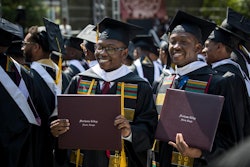Diversity needs to go beyond tolerance. Tolerance is a first step. It is much better than conflict. But tolerance is a somewhat negative word, according to David See-Chai Lam, former lieutenant governor of British Columbia. To “tolerate” and to be “tolerated” involves an unequal relationship. Tolerance implies that the tolerator has the power to not tolerate.
German philosopher Herbert Marcuse said under conditions of inequality one cannot preach tolerance to the oppressed. Tolerance poses little challenge to an unjust status quo and silences the oppressed. Going beyond tolerance is a journey of building competencies and dispositions beyond shallow acceptance and celebratory sympathies and sensibilities.
The destination is cultivated and sustained by mutual empathy and respect. The path is littered with abandoned stereotypes and dismantled barriers. Venomous malice spewed (both on and offline) is repelled and driven back by an appalled, interconnected community of victims and allies. Bullies and their ilk are no longer ignored and tolerated but met with massive doses of outrage and shamed into extinction.
Facilitating this journey means helping students build bridges across unfair biases and attitudes by anchoring the school experience in a genuine respect of other beliefs. Instead of mere tolerance we should now see our goal as creating welcoming environments, understanding and appreciating differences and developing cultural competencies that model compassion and trust. Glimpses of this scenery are in front of us now. A new social standard founded on wired relationships and plugged-in communities is emerging.
According to a Pew Research Center report titled “Millennials: A Portrait of Generation Next,” young people consider their use of technology as the greatest difference between them and previous generations—Generation X, Baby Boom, and Silent. Generation Next sends more than a dozen text messages a day, and more than 80 percent sleep with their cell phones. At the same time, these young adults are the most tolerant of any generation on social issues like immigration, race and sexual preference.
For example, of all polled generations, Generation Next is the most comfortable with interracial dating and marriage. Close to 90 percent of White 18- to 29-year-olds have no problem with a family member marrying someone of African, Hispanic or Asian descent. Only about half of respondents from the Baby Boom Generation think the same.
Looking at demographic trends, having to go beyond tolerance is also needed outside traditional notions of race and bigotry. For many decades, net migration in rural states like Iowa was negative—more people moved out than moved in. During the 1980s, more than 250,000 more people left Iowa than moved in and its overall population decreased, especially in small towns.
This century has seen a dramatic reversal of that trend thanks to the immigration of African-Americans, Asians and especially Hispanics, contributing to net gains in emigration. Data from the Iowa Center for Immigrant Leadership and Integration show that immigrants accounted for 66 percent of Iowa’s population growth from 2000 to 2005.
In the United States, minority populations are growing more than 11 times faster than White populations. California, Hawaii, New Mexico and Texas now have majority-minority populations. In higher education, even in the heartland, we must prepare our students for diverse experiences found in distant places like Chicago, California and Texas and in our backyards.
We need to create global competencies in classrooms without borders in preparing our students for the workplace of tomorrow. According to the Iowa Department of Economic Development, workers employed at companies that export earn 15 percent more than workers in non-exporting companies. Workers at exporting plants enjoy greater job stability and fewer layoffs. The failure rate for exporting firms is one-third less than for non-exporting firms.
As a technologist, I naturally think technology can play an important role in bringing in experiences and developing the skills needed to prosper in a diverse and international environment. Educators can use many of the digital tools Generation Next uses to bring in different ideas and perspectives into our classrooms.
We can engineer a diverse and international curriculum by setting up e-mail pen pals and organizing online social exchanges with people in other states and countries. We can also use webcams to arrange interviews, personal conversations, story sharing and collaborative projects with others beyond ourselves, schools and local communities.
Judging from survey data cited earlier, it seems technology is becoming an equalizer that levels playing fields and masks irrelevant differences. Technology can help integrate different viewpoints, beliefs and lifestyles. It is not, as some have predicted, a vice that isolates personal contacts, deteriorates social proficiencies and segregates along lines of haves and have-nots. As a nation, we may becoming a place where people are judged not by the color of their skin but by the content of their tweets.
Dr. John Achrazoglou is director of the Education Technology Center and co-chair of the Charter Committee on Diversity at the University of Iowa.


















